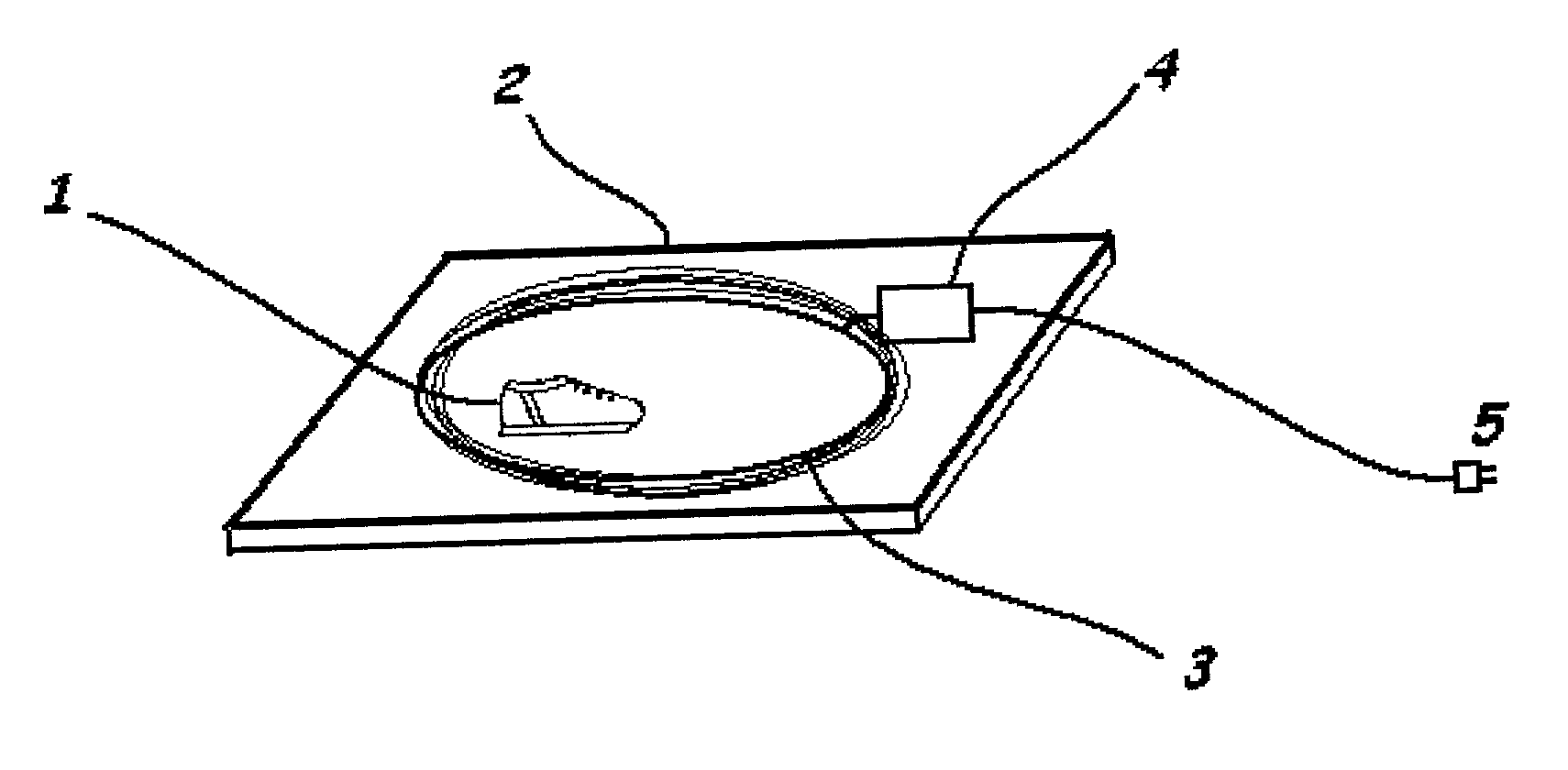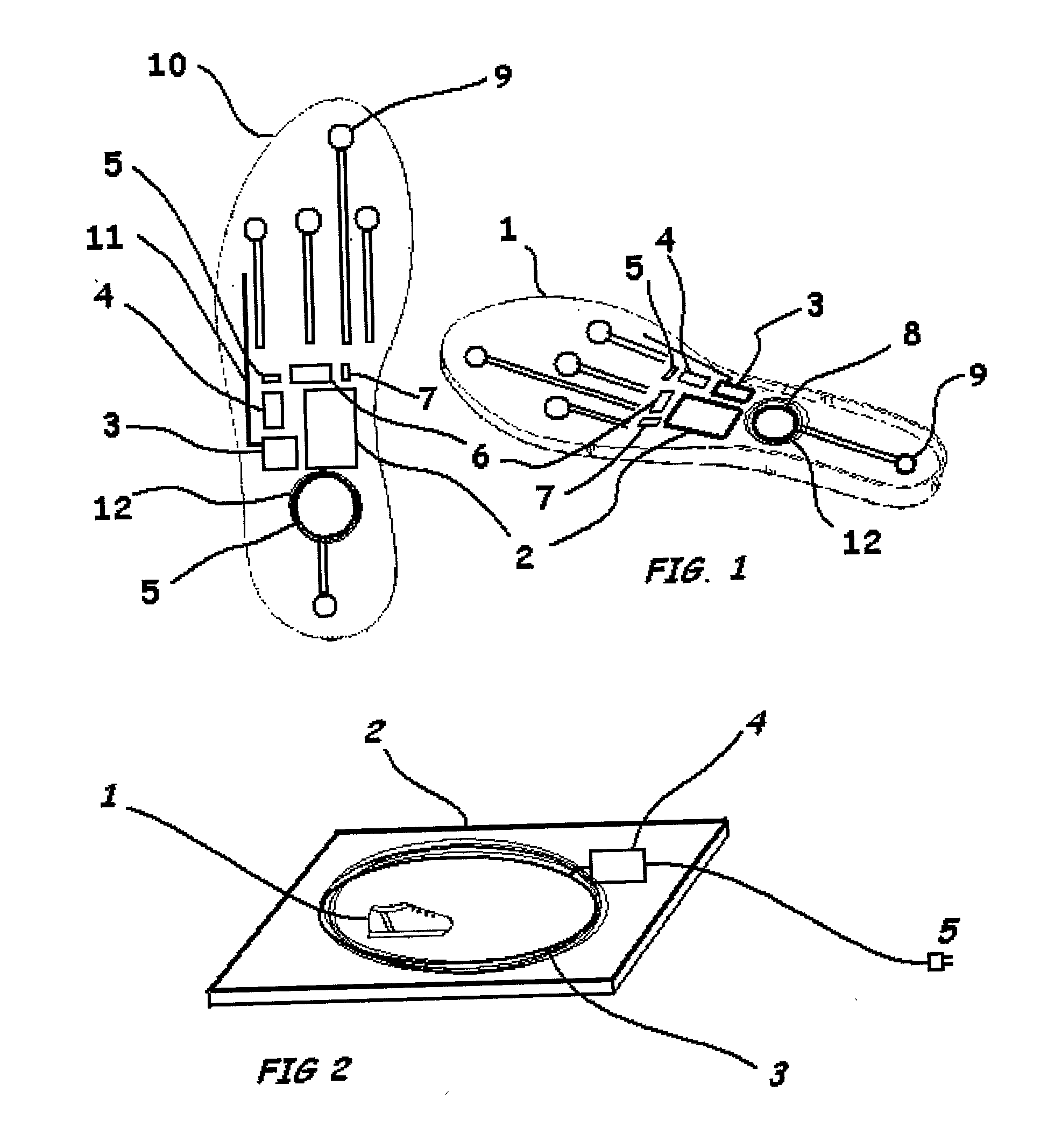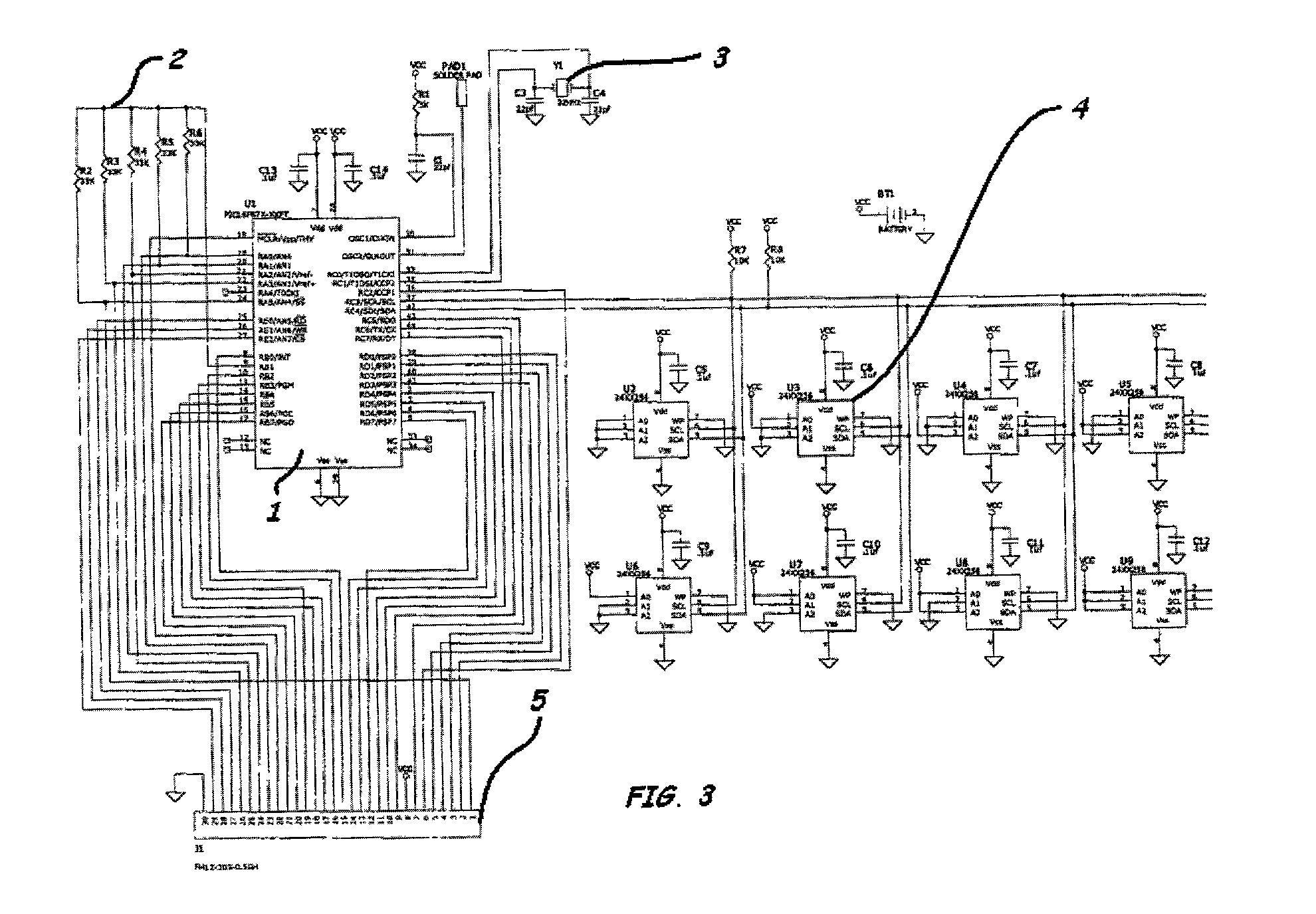Instrumented insole
a technology of insoles and instruments, applied in the field of instruments, can solve the problems of reduced walking velocity and disability, inconvenient routine clinical rehabilitation, and high cost of such equipmen
- Summary
- Abstract
- Description
- Claims
- Application Information
AI Technical Summary
Problems solved by technology
Method used
Image
Examples
example 1
[0019] Methodology: The device to be developed is shown in FIG. 9. The force sensors are placed along the insole, such that they will detect force applied during the push-off phase. The solid state gyro (Type ENC-03JA, Murata, Japan) is mounted nearby (its location is not critical) to detect the angular velocity of the foot. Since the distance of the force sensors to the ankle-joint is known from the dimensions of the insole, the moment of force and angular velocity of the foot can be calculated. A necessary assumption is that the shank (lower-leg) of the subject is relatively stationary, with the foot angular velocity then being a close approximation of the ankle velocity. This is normally the case in both normal and pathological gait.
[0020] Electronics and Signal Processing: The force sensors require charge-amplifier. The charge from each sensor can be multiplexed before amplification, so that only a single amplifier is required, which will be initially housed in a small box on a ...
example
[0022] Method: The solid-state gyro sensor (Type ENC03JA, Murata, Japan) was mounted in a Pelite insole (FIG. 1). Its location in the instep was selected so as to be unaffected by flexing of the sole, and it was aligned transversely, such that it was most sensitive to angular velocity about the talo-crural joint. The subject then underwent a standard 3D gait analysis, using a Vicon motion analysis system (Oxford Metrics, Oxford, UK). The Vicon Clinical Manager (VCM) model (5) was used, with markers on the second metatarsal, lateral malleolus and lateral femoral condyle determining the foot and ankle joint angles. The output of the gyro sensor was recorded simultaneously. The subject was asked to walk slowly (0.65 m / s), in order to simulate a pathological gait. Several steps were recorded.
[0023] Results: The output of the gyro sensor closely tracked the angular velocity of the foot, as measured by the Vicon motion analysis system (FIG. 2). The objective of this study was to compare t...
PUM
 Login to View More
Login to View More Abstract
Description
Claims
Application Information
 Login to View More
Login to View More - R&D
- Intellectual Property
- Life Sciences
- Materials
- Tech Scout
- Unparalleled Data Quality
- Higher Quality Content
- 60% Fewer Hallucinations
Browse by: Latest US Patents, China's latest patents, Technical Efficacy Thesaurus, Application Domain, Technology Topic, Popular Technical Reports.
© 2025 PatSnap. All rights reserved.Legal|Privacy policy|Modern Slavery Act Transparency Statement|Sitemap|About US| Contact US: help@patsnap.com



